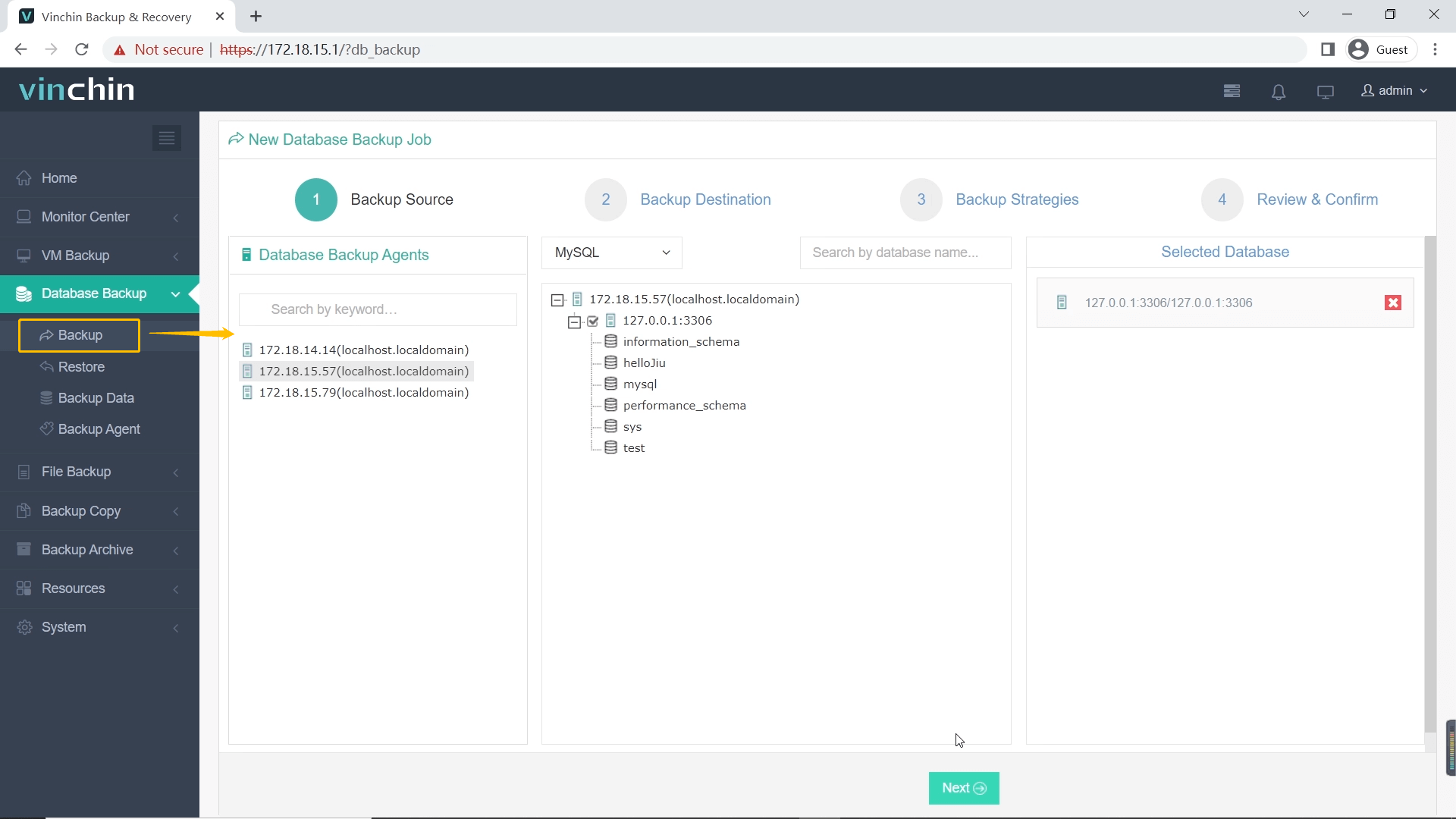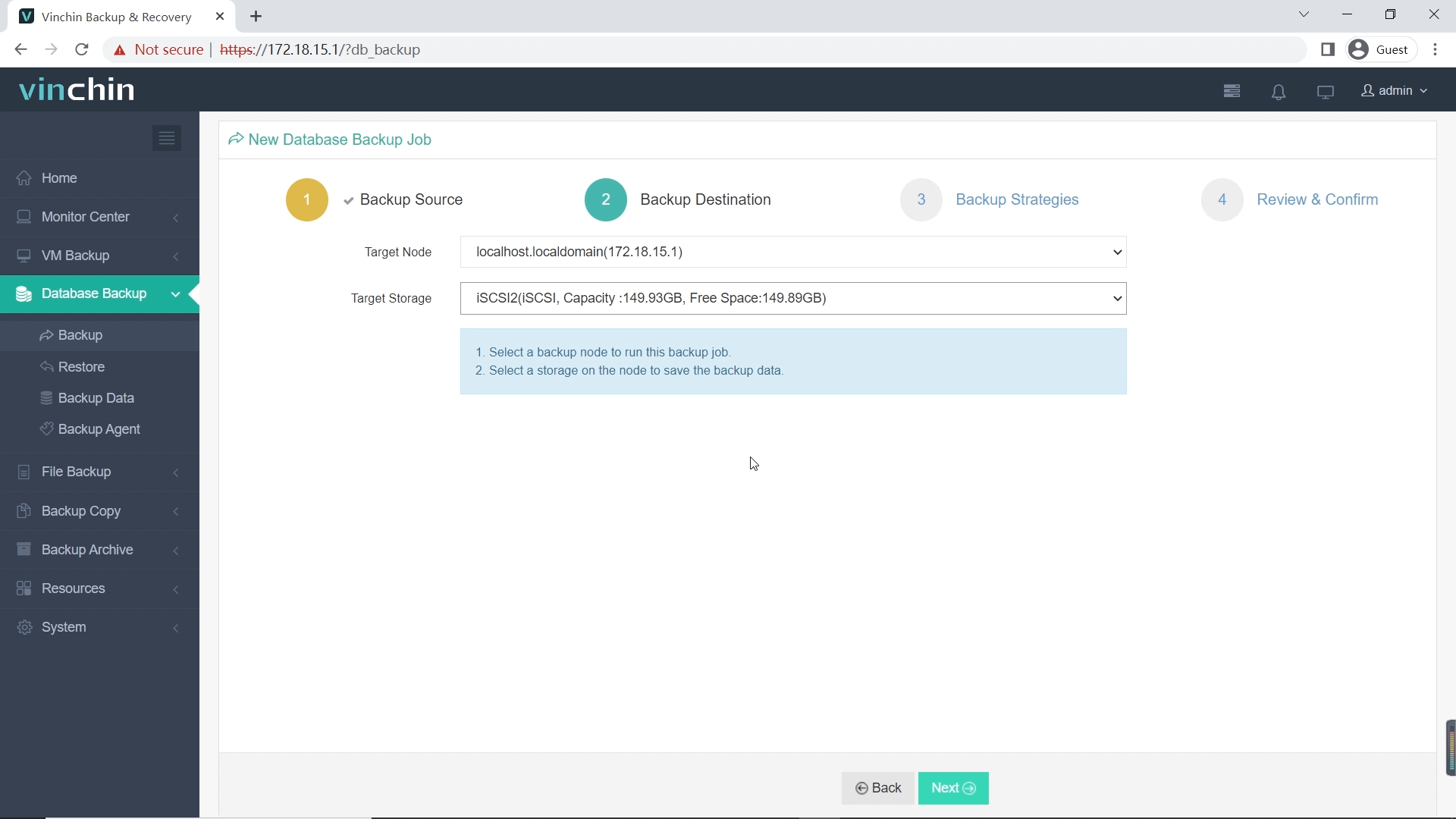-
What is MySQL Backup of All Databases and Users?
-
Method 1: mysqldump for All Databases and Users
-
Method 2: MySQL Shell Full Backup Approach
-
How to Automate and Schedule MySQL Backups?
-
Backup MySQL databases with Vinchin Backup & Recovery
-
MySQL Backup All Databases And Users FAQs
-
Conclusion
Backing up your MySQL databases—and all user accounts—is not just a routine task. It’s your insurance against accidental DROP DATABASE commands, hardware failures, ransomware attacks, or even simple human error. Have you ever considered what would happen if you lost both your data and every user account overnight? For many organizations, this could mean days of downtime or even regulatory penalties under laws like GDPR or HIPAA. In this guide, we’ll walk through how to perform a mysql backup all databases and users operation step by step—from beginner basics to advanced automation—so you can sleep easier knowing your environment is protected.
What is MySQL Backup of All Databases and Users?
A full MySQL backup that includes all databases and users means saving every database schema, table structure, row of data—and every user account along with their passwords and privileges. This type of backup lets you restore not only application data but also who can access it and what they’re allowed to do.
There are two main types of backups: logical and physical. Logical backups (like those created with mysqldump) export SQL statements that recreate your databases when run later; these are portable across systems but may not capture point-in-time states unless combined with other tools. Physical backups copy raw database files directly from disk; they’re faster for huge datasets but less flexible for moving between servers or versions. For most migrations or disaster recovery plans where portability matters—or when you need to back up both data and users—a logical backup is preferred.
Method 1: mysqldump for All Databases and Users
The mysqldump utility remains the classic tool for creating logical MySQL backups. It generates a text file filled with SQL statements that can rebuild your entire environment elsewhere.
Before diving in: always ensure you have sufficient privileges—at minimum SELECT on all tables plus RELOAD so that locks work correctly during dumps.
To back up everything—including user accounts—run:
mysqldump -u root -p --all-databases > all_databases.sql
This command prompts for your password then writes out every database (including the special mysql system database where user info lives) into all_databases.sql.
If you want stored procedures/functions (routines) or scheduled events included—which many production systems rely on—add:
mysqldump -u root -p --all-databases --routines --events > all_databases.sql
For larger environments where uptime matters, consider using flags that avoid locking tables:
mysqldump -u root -p --all-databases --routines --events --single-transaction --quick > all_databases.sql
The --single-transaction flag works best if all tables use InnoDB; it takes a consistent snapshot without blocking writes. The --quick option streams rows directly rather than loading them into memory first—a lifesaver for big datasets.
If working in MariaDB environments (or compatible forks), some versions support:
mysqldump -u root -p --all-databases --system=all --insert-ignore > all_databases.sql
This ensures explicit CREATE USER/GRANT statements appear in your dump file so privileges restore cleanly—even if some users already exist at restore time (--insert-ignore helps prevent errors).
Restoring from such a dump is straightforward:
mysql -u root -p < all_databases.sql
Want just one database restored from an “everything” dump? Use:
mysql --one-database dbname -u root -p < all_databases.sql
Always test restores in a non-production environment before relying on them!
Method 2: MySQL Shell Full Backup Approach
MySQL Shell offers modern features like parallel processing and cloud integration—making it ideal for large-scale deployments or cloud-native workflows.
1. Start by connecting via MySQL Shell:
mysqlsh --uri root@localhost
2. Then run this command to create a logical backup of everything:
util.dumpInstance('/path/to/backup/')This will generate a directory containing organized dumps of each schema—including users/privileges—for easy import later.
To restore from such a backup:
util.loadDump('/path/to/backup/')These utilities offer speed advantages over traditional methods thanks to built-in parallelism; they also handle object dependencies automatically so restores go smoothly—even across different server versions.
How to Automate and Schedule MySQL Backups?
Manual backups don’t scale well—and busy admins often forget them during crunch times! Automation ensures regular protection without fail.
On Linux systems, cron jobs make scheduling easy:
1. Open crontab editor:
crontab -e
2. Add this line to run nightly at 2am:
0 2 * * * /usr/bin/mysqldump -u root -pYourPasswordHere --all-databases > /backups/all_databases_$(date +\%F).sql 2>> /var/log/mysql_backup.log
3. Consider piping errors into email alerts:
... || echo "MySQL backup failed!" | mail -s "Backup Alert" admin@example.com
Remember never to hardcode plaintext passwords; instead use credential files secured by OS permissions wherever possible!
For Windows environments use Task Scheduler instead—with similar command lines adapted accordingly.
Some admins prefer tools like mysqlpump which offer inherent parallelism compared to mysqldump—but always check compatibility first. For simpler setups requiring minimal scripting effort there are open-source wrappers like automysqlbackup available too—but always vet third-party scripts before deploying them in production!
Automating restores can be useful too—especially when testing DR plans quarterly as part of compliance routines.
Backup MySQL databases with Vinchin Backup & Recovery
To better protect data, it is recommended to backup your databases. Vinchin Backup & Recovery delivers powerful functionality to protect your databases in both virtual machines and physical servers. By cooperating well with VM-level backups, dual insurance is given to the users of virtual environments for their key business data and information systems.
Vinchin Backup & Recovery supports protection of Oracle DB, MySQL, SQL Server, PostgreSQL, Postgres Pro, and MariaDB installed on both physical and virtual machines with powerful database backup and restore features. It also provides full backup, differential backup, incremental backup and transaction log backup strategies for you to set your own backup plan on demand.
Vinchin Backup & Recovery supports efficient hot backup without affecting the normal operation of databases and it is easy to create a customized database backup job.
1 Select the target database

2 Select the backup storage

3 Select the backup strategies

4 Submit the job

You can start to use this powerful system with a 60-day full-featured free trial. Just click the button to get the installation package. You can click here to learn more about how to backup MySQL with Vinchin Backup & Recovery.
MySQL Backup All Databases And Users FAQs
Q1: How do I verify my SQL dump isn’t corrupted?
A1: Run checksum validation on completed dump files or perform trial imports into test servers regularly as part of best practices.
Q2: Can I automate sending successful backup notifications?
A2: Yes—append notification commands like mail, Slack webhooks, or monitoring hooks after each scheduled job completes successfully/fails unexpectedly.
Q3: What should I do if my automated script fails due to locked tables?
A3: Add --single-transaction flag if using InnoDB engine OR schedule jobs outside peak hours OR temporarily disable heavy write operations during maintenance windows.
Conclusion
Full mysql backup—including every database plus users—is vital for disaster recovery plans that actually work under pressure! Manual methods give flexibility while Vinchin delivers automation at scale—all designed so IT teams stay ready no matter what comes next.
Share on:






